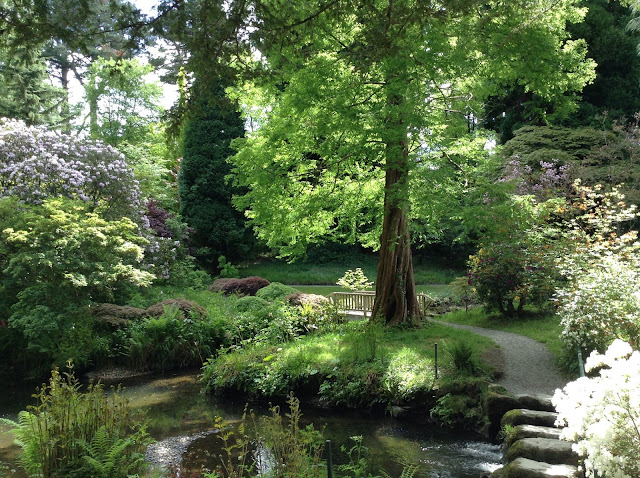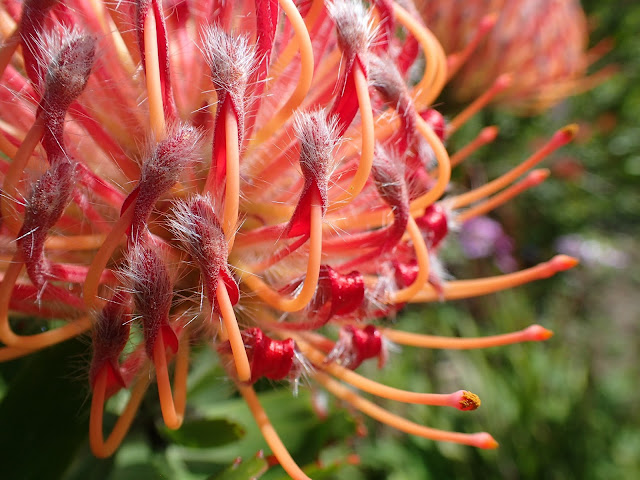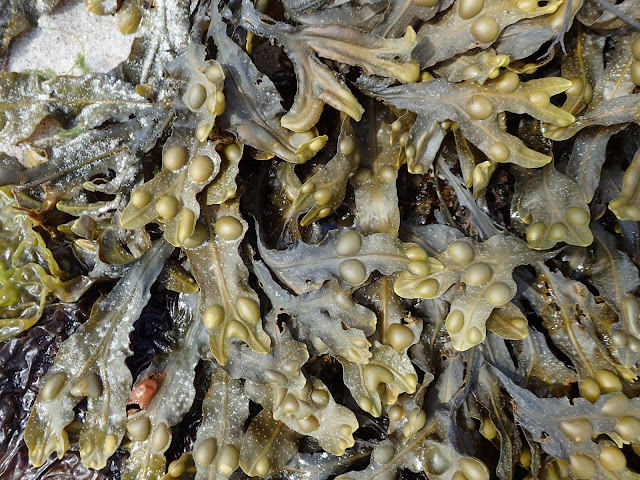Well. My how things can change in the space of a day, or night as it really happened...
Left Manila after a fun last night out with good friends, flew back to Chennai, India, to pick up my body bag of gear, and then hopped on a night plane to London.
It was rather surreal as he plane dipped below the clouds on the landing approach... it looked rather like we were flying into a diorama, a museum exhibit with AstroTurf and plastic houses set up for a game of Monopoly... Everything so tidy, clean lines, big blocks of simple colors (green grass, brown / brick houses, grey asphalt)... was there any life? It was hard to tell, everything went in the same lines, same flow, so ordered and discrete... nothing standing out except the absence of things standing out.
And then. I got off the plane at Heathrow and was reminded there most certainly was life in this new land ;)
Thus began my UK season, exploring the western coastlines (and manors and gardens) from Portsmouth (on the south coast) around the western toe of England, pinballing north back and forth between Ireland and Britain, on up to Scotland's Outer Hebrides islands where we experienced (among other things), sea birds, sea stacs, seals, seaweed, and the outer island culture of peat cutting, blackhouses, and Harris Tweed to name a few regional icons.
Just a smattering of images from several trips... I'm updating pics and captions and trying to get the rest of my summer "in print" so to speak so there is a clean slate for next adventures... hope you have fun tagging along!
xoxo friends!
 |
| like Mont St Michele, it's the English version-- St Michael's Mount, off Penzance. It's a private castle accessible at low tide, with some stunning terraced gardens. |
 |
| view down from the castle battlements, can see some of the garden terraces below |
 |
| view up from gardens... it's a mild climate here at the foot of England, gulf stream and all so the gardens are quite "Mediterranean", lots of succulents |

 |
| I've got SO many plant pics so have to be judicious... this is a gorgeous geranium relative from... dang. I forget but will look it up again! |
 |
| biking around one of the Isles of Scilly, no cars (for tourists anyway) just carts, horses, tractors and fine views |
 |
| a bay on the isle of Bryher... nearly opposite an excellent we cafe/pub... |
 |
| so many gins in England... wanted to do some tasting (they advertised 10 local bottles!) but as it was only 10:30am and my first trip guiding with this new company, so I took a photo instead of a bottle... |
 |
| working up to fully expressing my inner viking in Waterford, England |
 |
| on a bus trip through Snowdonia National Park in Wales |
 |
| note to self... |
 |
| shots from the many fine manors and gardens we visited |
 |
| redwoods in Scotland! |
 |
| typical view, the commute home from a day of touring ashore... yes i'm driving and imaging at the same time... not illegal (yet!) |
 |
| ahhh, and here we are getting to Scotland and the outer Isles... this is sea pink or thrift and an example of the lichen amazingness that occurs at the shorelines |
 |
One of my only surviving photos of an amazing place, Loch Scavaig... read a book called The Stonor Eagles for a feel of these majestic inner reaches and wild places.
|

 |
| sundews! that's what bogs are good for... |

 |
| St Kilda... sort of like a South Georgia analogy for British folk in many ways [y'all correct me if I'm mischaracterizing!]... the western-most inhabited island of Britain, a remote outer island group where a small community used to live essentially in isolation, very bare to the bone surviving by harvesting cliff-dwelling sea birds (by going over the cliff on ropes or climbing just about sheer cliffs from the ocean up...). Nowadays ships are more reliable and efficient so travel is easier to get here, but it is still quite difficult due to the usually unruly weather and sea conditions so it is somewhat like a holy grail for those Brits/Scots who are keen birders and interested in history. This image documents a fine day at St. Kilda, on the main island of Hirta overlooking the harbor, our ship the Serenissima, and the contemporary facility used as part of a missile monitoring defense network-- civilian contract-run. The old village settlement is out of view around to the left of the monitoring facility (some village buildings are well preserved for museum and hosting conservation trust workers), but what can be seen here from that era are the remains of corral walls, and the cleits (small stone shelters) built to store the harvested seabirds-- dried and preserved in situ due to the door openings to catch the severe down-slope winds but protected from most of the all pervasive rain. We were lucky this day. |
 |
| similar vantage on a less fine day... but you can still see the harbor and I'm standing upright not being blown about... so not so bad! |
 |
| This is the cliffy backside of the island. When I took the previous photos overlooking the harbor I was in a similar position and orientation as these folks. The birds all roost on those cliffy slopes, and that's where the residents went over and down to harvest them! |
 |
| who's ready to go down to get supper?! |
 |
| taken on my belly looking down the cliff... at a pair of fulmars, in their home spot, happily not feeling the threat of being eaten by a human any time soon |
 |
after visiting Hirta, the next highlight is to "ship cruise" around the sea stacs-- these vertical rock pinnacle islands that are home to thousands and thousands of seabirds... this is a gannet colony and look closely up into the sky... all the specks there are birds! And they utilize any small crack or crevice on the rock for their nest.

this shows better definition on where the birds are... again all the specks up in the clouds are the thousands of birds flying and circling, coming and going from feeding grounds, time off the nest, etc. |
 |
| here again, looking closely you can see white lines criss crossing the rock-- the white is bird guano staining below the nest sites... as our geologist would say it's a fine example of biology highlighting geology... lots of faults in the rock formations in this region. |
 |
| and yes... many plants. this is a heath spotted orchid, quite abundant in the boggy areas. so lovely to be around new and interesting flora! |
 |
| when in Scotland... all things haggis. |
 |
| i got my very own puffin picture. gosh they are so cute! |
 |
| another day at work... |
 |
| views over Tanera Mor of the Summer Isles |
 |
Taking a tour of the island of Lewis (which also includes Harris on the same terrain, just a mountain range inbetween more or less...) for us includes a visit to a blackhouse museum. Blackhouses were the traditional living structure, build half up with stone then covered with a frame roof filled/topped with what we in the states would think of as a sort of "sod" roof, then topped with thatch/hay/etc. The sod here though is peat-- which is sphagnum moss and other vegetation that grows slowly in water-dense areas, then eventually with a covering of heather/heath-- low shrubby finely stemmed and leaved plants. this all keeps growing slowly with the lower layers slowly decomposing in place, but not really decomposing because there eventually is no oxygen and it's wet and cold... so it's like a fossilized soil. Thick and dense and black, with this really tough shrub mat on top. So you take slabs of that, with the heather still on, and put the peat side out to shrink and dry and tighten (to become waterproof) on the outside, and the airtrapping fine-featured heath on the inside and it's a nicely insulated roof to live beneath in the really inclement weather that is the day-to-day norm in the outer Hebrides. Now, it's a blackhouse because the fire was inside... not much of a chimney, and the animals were in there too originally-- keep them warm (and you warm too!) and close by to manage. Not the most luxurious of times. these rebuilt houses look pretty flash compared to what grimmer conditions probably prevailed in many of them. the folks living in them were the crofters, the folks working the land owned by a master or landlord. Crofters were close to indentured servants... couldn't own the land, always in debt somehow to the laird... people are still crofing today but there are many more rights and certainly improved conditions. There's at least one fixed up blackhouse that's up on AirBnB for example...
|

 |
inside the blackhouse museum... these foot-pumped looms have been in use for around 100 years. if you buy something with the official Harris Tweed label, that fabric was woven by someone such as this chap-- by hand/foot, at home, on this island. Pretty cool.
|
 |
| another local stop to a remnant of a viking era stone building called a broch, dating back to around 100BC. Many theories about what purpose, whether defensive residence, or simply a local McMansion of the time, lookout tower, etc. It would have been about twice/three times as tall, cylindrical and a bit narrower at the top. Beautiful surroundings. The pink in the landscape are the flowering heather plants. |
 |
| Heather up close! |
 |
| here is a peat bank where folks come to cut their peat to use for home heating fuel... you can see the blocks of peat (dark rectanguar bits) stacked up along the top of the bank and scattered about, left to dry out before they're loaded up and taken home, stacked up like firewood. These banks have been used/cut for generations... it's like a plot allotted to your family and/or your croft and may be several miles from where you actually live. Nothing is fenced or marked... it's just known whose area is whose... so it's not bog though sphagnum does start off in boggier areas... but the veg grows up and drains and then becomes suitable for cutting... the peat "grows" about 1cm per year. So if a peat bank is a few meters thick... well, it's not as old as coal for a heat source, but it's got some age into it. |
 |
| and here's one species of sphagnum moss, the main ingredient in peat. so this is the same stuff as what's known "peat moss". Widely used in gardening and horticulture... it's a great thing-- natural, holds water, has antiseptic/antimold properties... but it is definitely not a sustainable resource in a human-lifetime sort of sense. Renewable, well, yes. But if you want to wait around 8000 years until the next time you can cut the same swath of peat for your front door wreath arrangement... well, you think about that. I'm fine with local use for heating but not harvesting on an industrial scale like happens in parts of the world. There are alternatives... coconut coir for one is pretty awesome. And that's a waste product. Admittedly with travel / carbon costs since it comes from the tropics. But in the grand scheme I think it's a better choice than peat-- leave that carbon in the ground when we can. |
 |
| heading across the island, we get to the Standing Stones of Callanish, the local version of Stonehenge but much older if I remember correctly... 3000BC! |
 |
| then on down through the Uists... just big open scenery. |
OK, here on is just a selection of more random UK images... no particular order!
 |
| abandonded settlement on Mingulay, and these gorgeous native wild flag irises are everywhere in the Hebrides... so lovely! |
 |
| in the chapel / cathedral on Iona, nature is inside as well as outside... I love that there are sweet ferns in the walls of this special place. |
 |
| iron doesn't stay in its original state for too long on these salt-spray-engulfed islands... lots of character |
 |
| bluebells and puffins. summer in the Hebrides! |
 |
| there are worse views of home from the job site... |
 |
| When in Scotland... whisky is... rather a theme. |















































































No comments:
Post a Comment